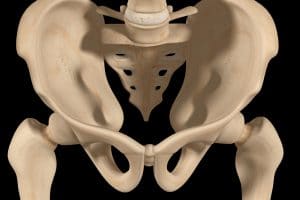Placenta praevia is a serious condition that occurs during pregnancy whereby the baby’s placenta is implanted near to, or over, the cervical canal.
“As the cervix dilates at the start of labour, the blood vessels that connect the placenta to the cervix and uterus can tear and result in bleeding, which is what makes this condition dangerous for both mother and baby,” Mater Mothers’ Hospitals Parent Education Unit Manager Michelle Kelly explains.
“Ultrasound is used to diagnose placenta praevia and to measure the distance of the placental edge from the cervix.”
The site of the placenta is usually identified at the 18 to 20 weeks scan and at this time approximately one in five women will have a low-lying placenta.
If a low-lying placenta is identified at this scan, a repeat will be recommended between 32 and 36 weeks of pregnancy, depending on where the placenta is positioned at the earlier scan.
By this time, only two per cent of women will still have a low-lying placenta.
Placenta praevia is classified into four types:
- Type I: the placenta is located in the lower part of the uterus but does not come close to the cervix. You can usually expect to birth vaginally with this type.
- Type II or marginal: the placenta touches but does not cover the cervix.
- Type III or partial: the placenta partially covers the cervix
- Type IV or complete: the placenta completely covers the cervix
Types II, III and IV are associated with a risk of heavy bleeding in labour as the cervix dilates and, therefore caesarean birth is usually recommended. The cause of placenta praevia is often unknown, however there are a number of factors that put women more at risk, including:
- previous caesarean birth or uterine surgery
- previous placenta praevia
- age—above 35 years
- multiple pregnancy—for example, twins or triplets
- multiple previous pregnancies
- endometriosis
- closely spaced pregnancies
- placental abnormalities
- abnormalities in the baby
- smoking.
Placenta praevia occurs in one in 200 women so serious complications are rare but sudden, painless bleeding (haemorrhage) can occur and requires prompt medical attention. If you start bleeding before your due date, it is important to go straight to hospital so they can monitor the bleeding and advise you on the most appropriate course of action.
“In some cases, severe bleeding may prompt an emergency caesarean delivery before your baby is full term,” Michelle said.
“In this situation, your baby may need some additional care and support from a team of neonatal critical care specialist doctors, neonatologists, nurses, midwives and allied health professionals.”
Mater’s NCCU consists of intensive care and special care nurseries. Each year, Mater Mothers’ Hospital’s Neonatal Critical Care Unit cares for more than 2000 seriously ill and premature babies, affectionately known as Mater Little Miracles.
Mater Mothers’ Hospitals, is Australia’s largest maternity service and is home to one of the country’s largest Neonatal Critical Care Units.
Tuesday 17th November 2015 is World Prematurity Day. Each year an estimated 15 million babies are born preterm, or before 37 weeks of completed pregnancy.













